The Chicago & Eastern Illinois went due south from Chicago to Evansville, Indiana. It also built a branch line to St. Louis in 1954. Until that year, its Chicago-St. Louis passenger trains, which started operating in 1904, relied on trackage rights over the Big Four (New York Central).
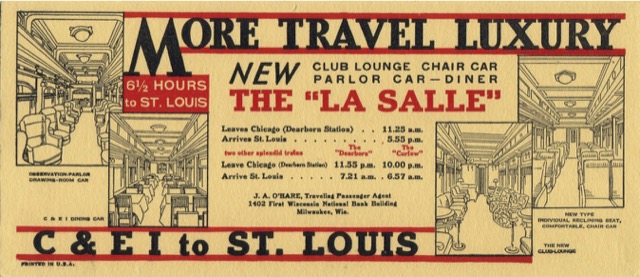
Click any image to download a PDF of that blotter. PDFs are about 0.3 to 0.6 MB each.
These first few blotters are probably from the 1920s and advertise three daily Chicago-St. Louis trains, the daylight La Salle and the overnight Curfew and even later overnight Dearborn. The La Salle took 6-1/2 hours to make the trip, while the overnight trains took even longer.
Each of these blotters advertise one of these trains while printing the schedule for the other trains in smaller print. The Curfew doesn’t have its own blotter, which either means Dale Hastin (to whom all of these blotters below) never collected one or that train was the slowest and least luxurious, so wasn’t heavily advertised.
Some time in the 1930s, C&EI supplemented the morning La Salle with the afternoon Zipper. Originally, this trains was also on a 6-1/2 hour schedule.
By 1940, C&EI was down to two trains a day on the Chicago-St. Louis route. The daylight Zipper‘s schedule had been reduced to just five hours while the Silent Knight was the overnight train. Despite its average speed of more than 65 mph, the Zipper apparently used heavyweight equipment.
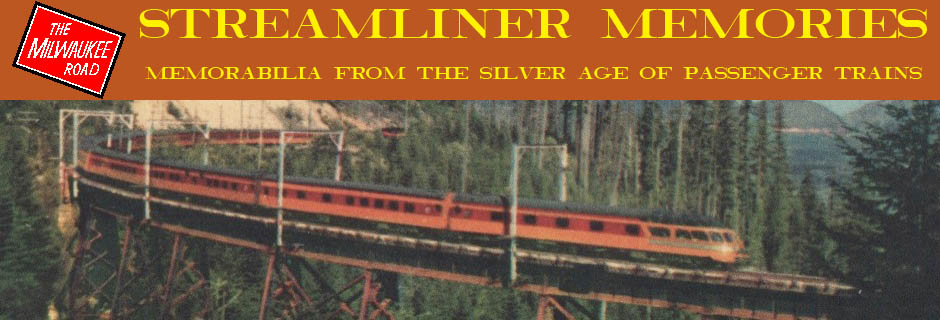
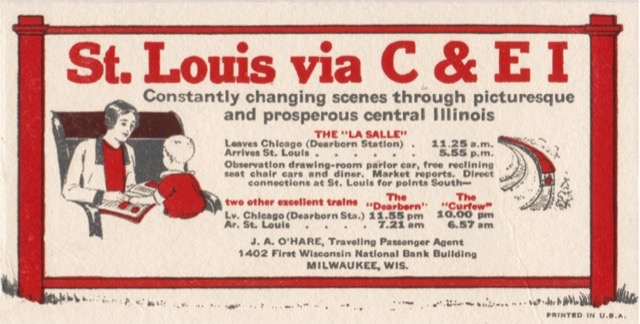
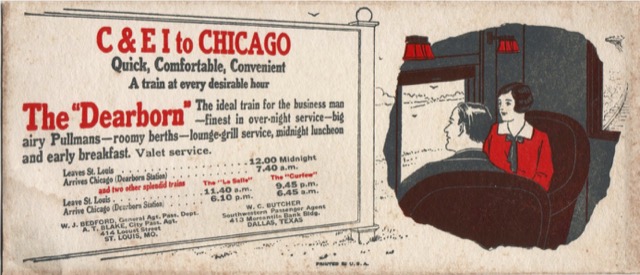
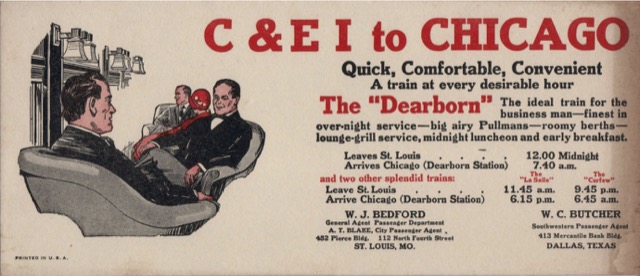
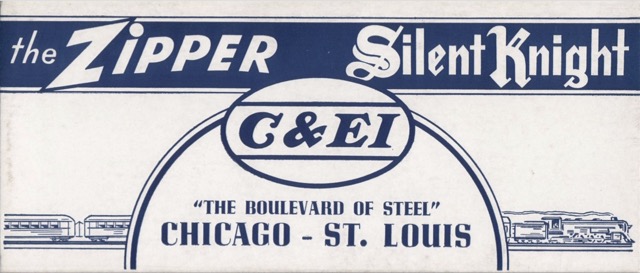
I remember reading an article about the “Curfew” and similar trains a couple of years ago in Forbes. It’s from a bygone era now, one where the train was really the only practical means of long distance travel.
Just imagine though that you were a St. Louis businessman who needed to travel to and from Chicago frequently on business. The sleepers were open for occupancy at 9:00. You could have dinner with the family, make a leisurely drive to the station at 8:30, get settled in to your room, and make some last minute phone calls, since the train was plugged in to the phone system until it departed. Then you could head head for the lounge car for a nightcap or a late snack. Even during Prohibition, there was still a way to get a nightcap. Have a chat with your business friends, who were also regular travelers, about how bad this depression thing might get.
After that, head back to your room and tuck yourself in to that fabulous Pullman bed and off to dreamland. Awake at 6:00 am and head to the diner for breakfast. The sleepers stayed open until 7:30 so you had plenty of time for a wash up and getting dressed. Check on your briefcase to make sure you had the sales presentation or contract in order, have the redcap hail you a cab, and head out for your day. Do it all in reverse order when it was time to head for home.
Compared to getting up at three in the morning, driving a half hour or 45 minutes to the airport, waiting to get your body cavities inspected, cramming yourself into an aluminum tube…all still to get to Chicago at 7:30 am, the Curfew doesn’t sound bad at all.
Jim